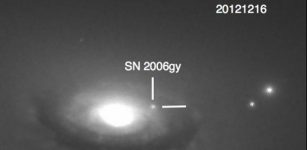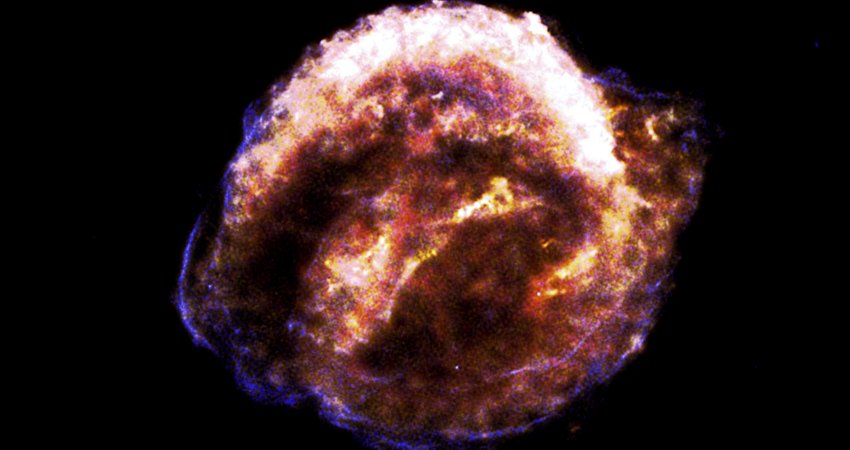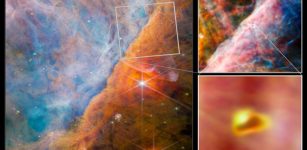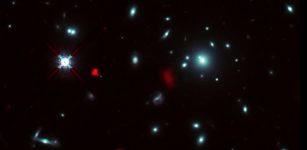Unusual Super-Outburst From An Unknown Dwarf Nova
Eddie Gonzales Jr. – MessageToEagle.com – Using NASA’s Kepler spacecraft archival data, astronomers uncovered an unusual super-outburst from a previously unknown dwarf nova.
The system brightened by a factor of 1,600 over less than a day before slowly fading away.
 This illustration shows a newly discovered dwarf nova system, in which a white dwarf star is pulling material off a brown dwarf companion. Credits: NASA and L. Hustak (STScI)
This illustration shows a newly discovered dwarf nova system, in which a white dwarf star is pulling material off a brown dwarf companion. Credits: NASA and L. Hustak (STScI)
The star system is a white dwarf star with a brown dwarf companion about one-tenth as massive as the white dwarf.
A white dwarf is the leftover core of an aging Sun-like star and contains about a Sun’s worth of material in a globe the size of Earth.
A brown dwarf – an object with a mass between 10 and 80 Jupiters – circles the white dwarf star every 83 minutes at a distance of only 250,000 miles (400,000 km)–about the distance from Earth to the Moon.
They are so close that the white dwarf’s strong gravity strips material from the brown dwarf, sucking its essence away like a vampire. The stripped material forms a disk as it spirals toward the white dwarf (known as an accretion disk).
The event remained hidden in Kepler’s archive until identified by a team led by Ryan Ridden-Harper of the Space Telescope Science Institute (STScI), Baltimore, Maryland, and the Australian National University, Canberra, Australia.
“In a sense, we discovered this system accidentally. We weren’t specifically looking for a super-outburst. We were looking for any sort of transient,” Ridden-Harper said in a press release.
Kepler captured the entire event, observing a slow rise in brightness followed by rapid intensification. While the sudden brightening is predicted by theories, the cause of the slow start remains a mystery.
“These dwarf nova systems have been studied for decades, so spotting something new is pretty tricky,” said Ridden-Harper. “We see accretion disks all over—from newly forming stars to supermassive black holes—so it’s important to understand them.”
Theories suggest that a super-outburst is triggered when the accretion disk reaches a tipping point. This causes thermal instability, causing the disk to get superheated. Indeed, observations show that the disk’s temperature rises from about 5,000–10,000° F (2,700–5,300° C) in its normal state to a high of 17,000–21,000° F (9,700–11,700° C) at the peak of the super-outburst.
This type of dwarf nova system is relatively rare, with only about 100 known.
Written by Eddie Gonzales Jr. – MessageToEagle.com Staff










